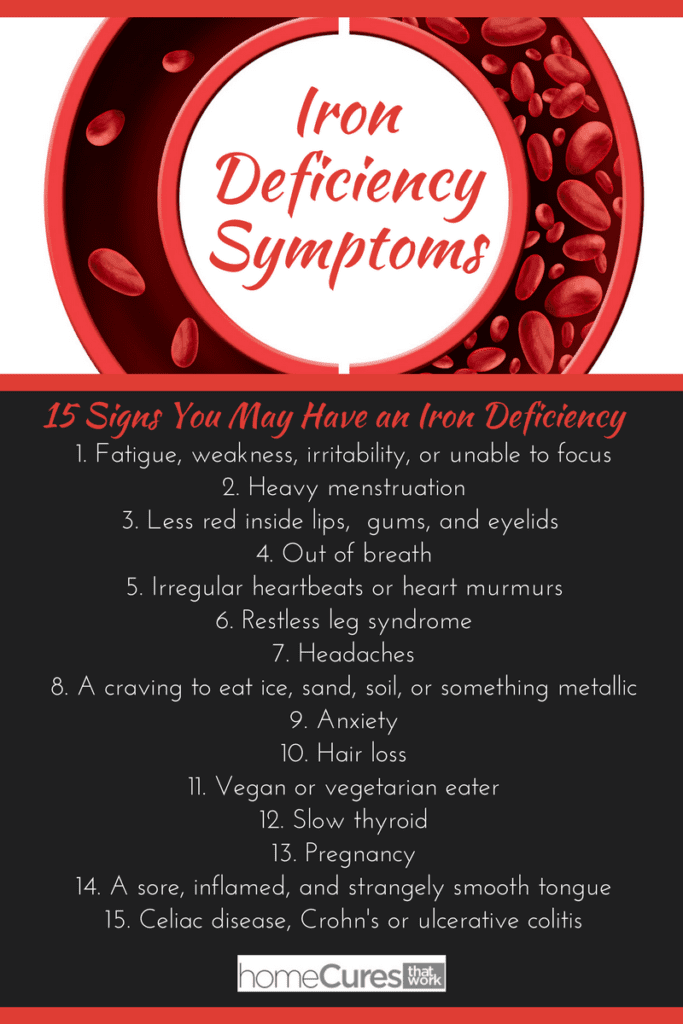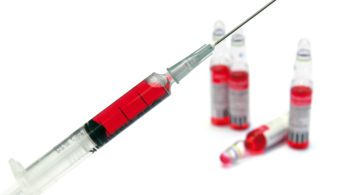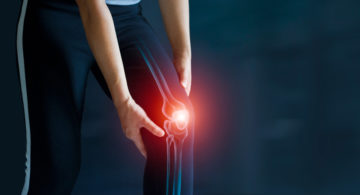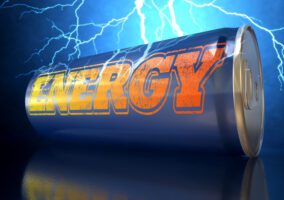Don’t Let Iron Deficiency Nail You!
Iron-deficiency anemia is the world’s most common nutritional deficiency disease and is most prevalent among children and women of childbearing age.
Iron is an essential mineral the body requires in small amounts and is readily available in meat, poultry, fish, dried fruits, grains and green leafy vegetables. However, iron from animal sources is twice as available to the body as iron from plant sources.
Iron is needed to produce hemoglobin, which enables red blood cells to transfer oxygen to the body’s tissues. Thus, iron is vital for:
- Energy production
- Hormone synthesis
- Growth and development
- Brain function
- Immune system activity
- Healthy cell function
Without iron, everything suffers—and can lead to anemia. Check out these symptoms of iron deficiency and, if you have them, see your doctor and request a ferritin test, which measures your body’s iron stores.
15 Signs You May Have an Iron Deficiency
- Your “normal” fatigue is coupled with feeling weak, irritable, or unable to focus.
- One of the most common causes of iron deficiency is heavy menstruation.
- If the inside of your lips, your gums, and the inside of your bottom eyelids are less red than usual, low iron may be to blame.
- If you notice that you get out of breath doing things that you’d normally handle just fine—whether climbing a flight of stairs or knocking out your usual workout—iron deficiency could be to blame.
- Irregular heartbeats, heart murmurs or enlargement are symptoms of a severe anemia.
- You have restless leg syndrome.
- Headaches due to swollen arteries.
- A craving to eat ice, sand, soil, or chew on something metallic can be a sign of iron deficiency.
- A lack of oxygen revs up your body’s sympathetic nervous system, tricking you into feeling even more anxious.
- Consistent anemia can lead to hair loss.
- You’re vegetarian or vegan.
- Iron deficiency slows your body’s thyroid function and blocks its metabolism-boosting effects.
- If you are pregnant, developing babies requires iron, which might deplete iron levels.
- Many people who are iron deficient complain of a sore, inflamed, and strangely smooth tongue. This is because low iron reduces levels of myoglobin, a protein in red blood cells that supports muscle health, like the muscle that makes up the tongue.
- Even if you get enough iron in your diet, celiac disease and inflammatory bowel diseases like Crohn’s or ulcerative colitis can lead to problems absorbing nutrients, including iron.
So how much iron do you need? The answer depends on a variety of factors including: age, gender, and lifestyle. In general, a typical adult dosage for correcting iron-deficiency anemia is 100-200 mg daily, divided into 2 or 3 separate doses. However, because the dose can depend on the weight of the individual, your physician should help determine how much iron supplementation is necessary to restore hemoglobin levels.
To prevent anemia in the average person, the recommended daily intake of iron should be between 10-20 mcg. Again, this could vary according to gender and age.
Iron-deficiency anemia should not be confused with megaloblastic anemia, which results from inadequate intake and/or utilization of folate and vitamin B12. Pernicious anemia is a form of megaloblastic anemia caused by a lack of a substance called intrinsic factor in the stomach that results in poor absorption of vitamin B12.
Sources of Iron
There are two main types of dietary iron—heme and nonheme. Heme iron is found in the blood and meat of animal products. Nonheme iron is found in plant sources like curry leaves, beans, spinach, nuts, and molasses. Your body absorbs heme iron more readily.
If you’re low on iron, you may not be getting enough from your diet. Or you may not be absorbing it from the foods you do eat. Readers who do consume animal products can find iron in lean meat and seafood. Vegans and vegetarians can find plenty of dietary iron in legumes, dark chocolate, spinach, seeds, and many other iron-rich plant foods. You should also include a good source of vitamin C to boost absorption.
Inadequate intake of vitamin C can also contribute to iron deficiency because vitamin C is needed to absorb iron found in plant foods (non-heme iron). Broccoli and red bell peppers are great choices because they have more vitamin C than oranges.
How to Get More Iron
Make iron-balance one of your health priorities. Too little can lead to the complications of deficiency; too much is dangerous and can cause toxicity. Avoid the extremes and find the right balance for your body. Most people should have no trouble getting all the iron they need from food, but supplementation may be necessary in some situations.
There are two general types of iron supplements, which contain either the ferrous or ferric form of iron. Ferrous iron is the best-absorbed form of iron supplements.
There are three types of ferrous iron supplements commonly found: ferrous sulfate, ferrous fumarate, and ferrous gluconate. All three are good forms of iron. Be careful to avoid cheap forms of iron and iron shavings. Certain co-factors such as vitamin C and betaine HCL help maximize iron absorption in the body.
Independent lab testing of iron supplementation showed that one product DID NOT pass due to lead contamination or for not containing the claimed amount of iron: Vitacost Iron®.
Nineteen products passed testing. They contained their claimed amount of iron, met the standard for purity from lead, and, if standard tablets, broke apart properly to release their ingredients. Listed alphabetically below are the approved iron supplement products.
- Country Life Easy Iron® (Ferrochel® ferrous bisblycinate chelate)
- CVWS Pharmacy® Iron (ferrous sulfate)
- Feosol® Bifera® HIP & PIC Iron (PIC polysaccharide iron complex) and HIP (heme iron polypeptide as Proferrin®)
- Fergon® (ferrous gluconate)
- Ferr®-Sequels (ferrous fumate)
- Finest Nutrition Iron Supplement (ferrous sulfate)
- Floradix® Iron + Herbs (ferrous gluconate)
- Garden of Life® Vitamin Code® Raw Iron™ (amino acid chelated)
- GNC Gentlesorb Iron (hydrolyzed protein chelate)
- GNC Ultra Iron (ferrous sulfate)
- Life Extension® Iron™ Protein Plus (IronAid® iron protein succinylate)
- Nature Made® Iron (ferrous sulfate)
- Nature’s Bounty® Iron (ferrous sulfate)
- Nutrilite® Tri-Iron Folic (ferrous bisglycinate and ferrous fumate)
- Ortho Molecular Products® Reacted iron (Ferrorchel® ferrous bisglycinate chelate)
- Solgar® Gentle Iron® (iron bisglycinate chelate)
- Spring Valley® Iron (ferrous sulfate)
- Thorne Research Iron Bisglycinate (iron II bisglycinate)
- TwinLab® Chewable Iron – Blackberry flavor (Ferrochel® ferrous bisglycinate)
Many of the tested products may have been designed for treating iron deficiency and, therefore, exceed the Recommended Dietary Allowance (RDA) as well as the upper level (UL) of tolerable intake for iron. Under a physician’s supervision it’s acceptable to exceed these limits, because the potential consequences of untreated iron deficiency may be more severe than the potential adverse effects of high iron intake.
IMPORTANT: As few as 3 adult iron tablets can poison, and even kill, children. This includes any form of iron pill. No one, not even adults, should take a double dose of iron if they miss one dose.
Tips for taking iron are:
- For best absorption, take iron between meals. (Iron may cause stomach and intestinal disturbances, however. Some experts believe that you can take low doses of ferrous sulfate with food and avoid the side effects.)
- Always drink a full 8 ounces of fluid with an iron pill.
- Keep tablets in a cool place. Bathroom medicine cabinets may be too warm and humid, which may cause the pills to disintegrate.
Side Effects of Too Much Iron
Common side effects of iron supplements include the following:
- Constipation and diarrhea — these are rarely severe, although iron tablets can aggravate existing digestive problems such as ulcers and ulcerative colitis.
- Nausea and vomiting may occur with high doses, but you can control this by taking smaller amounts. Switching to ferrous gluconate may help some people with severe digestive problems.
- Black stools are normal when taking iron tablets. In fact, if they do not turn black, the tablets may not be working effectively. This tends to be a more common problem with coated or long-acting iron tablets.
- If the stools are tarry looking as well as black, if they have red streaks, or if cramps, sharp pains, or soreness in the stomach occurs, bleeding in the digestive tract may be causing the iron deficiency, and the patient should call the doctor immediately.
- Acute iron poisoning is rare in adults, but can be fatal in children who take adult-strength tablets.
Iron Supplement Interactions With Other Drugs
Certain medications, including antacids, can reduce iron absorption.
Iron tablets may also reduce the effectiveness of other drugs, including:
- Antibiotics: tetracycline, penicillamine, and ciprofloxacin
- Anti-Parkinson’s disease drugs: methyldopa, levodopa, and carbidopa
Although iron-deficiency anemia is common and can play havoc with your health, you can easily beat this deficiency with dietary changes and/or iron supplementation. Your doctor can determine whether you are deficient in iron with a simple blood test. So if you suffer with any of the above symptoms, put your mind at ease with a visit to your doctor.
RELATED:

























